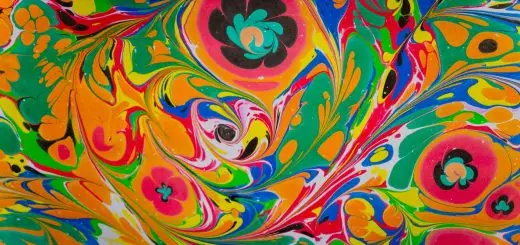Wu Wei in Taoist Art: Effortless Expression

Looking for more amazing products? Check out our online store and explore our collection here! Happy shopping!
Before diving in, please note: This post is for informational purposes only. If you’d like to know more about how we approach topics, feel free to check out our friendly Disclaimer Page.
Hey there, amazing readers! 
We’re committed to delivering quality posts, and your support (even just sticking around despite the ads) means everything to us. So, bear with us, and thanks for helping us keep the good vibes rolling. Now, on to the fun stuff!
TRANSLATE BUTTON AT THE END OF THE ARTICLE
A Quick Overview
Taoist art is deeply rooted in the philosophy of Wu Wei, which translates to "effortless action" or "actionless action." This concept emphasizes the idea of going with the natural flow of things, without striving or forcing outcomes.
In Taoist art, Wu Wei is reflected in the artist’s ability to create with ease and spontaneity, allowing the artwork to manifest naturally.
This article delves into the exploration of Wu Wei in Taoist art, understanding its significance, symbolism, techniques for achieving it, and how it fosters balance, harmony, and simplicity in artistic expression.
Exploring Wu Wei in Taoist Art
Taoist art is known for its emphasis on capturing the essence of nature and reflecting the principles of Taoism, particularly the concept of Wu Wei.
Artists seek to embody the idea of effortless expression, allowing their creativity to flow freely without constraint.
Through their artwork, they aim to convey a sense of harmony, balance, and spontaneity, mirroring the natural order of the universe.
Taoist art serves as a medium for artists to connect with the Tao, or the underlying force that governs all things, and to express their innermost thoughts and emotions without resistance.
Understanding the Concept of Wu Wei
Wu Wei is a fundamental principle in Taoist philosophy, advocating for action through non-action.
It encourages individuals to align themselves with the natural rhythms of life, allowing events to unfold organically without unnecessary interference.
In the context of art, Wu Wei suggests that artists should let go of preconceived notions, expectations, and attachments, allowing their creative process to unfold spontaneously.
It emphasizes the importance of being present in the moment, surrendering to the creative flow, and trusting in one’s intuition and innate abilities to guide the artistic expression.
How Taoist Art Reflects Wu Wei
Taoist art reflects Wu Wei through its emphasis on simplicity, spontaneity, and naturalness.
Artists strive to capture the essence of their subjects with minimal effort, using fluid brushstrokes, subtle colors, and negative space to convey depth and emotion.
By embracing the concept of Wu Wei, artists can tap into their inner creativity and connect with the universal energy that permeates all things.
This allows for the creation of art that is imbued with a sense of authenticity, presence, and vitality, resonating with viewers on a deeper level.
Effortless Expression in Traditional Art
Traditional Taoist art, such as landscape painting, calligraphy, and poetry, exemplifies the principle of Wu Wei through its emphasis on capturing the beauty of nature and the spontaneous flow of energy.
Artists often depict serene landscapes, misty mountains, flowing rivers, and ancient forests to convey a sense of harmony and balance.
Calligraphers use bold, fluid strokes to express their emotions and thoughts in a direct and unfiltered manner, embodying the spirit of Wu Wei through their effortless brushwork.
Symbolism of Wu Wei in Taoist Art
In Taoist art, Wu Wei is symbolized by the concept of "wu xing," or the five elements, which represent the cyclical nature of existence and the interconnectedness of all things.
The elements—wood, fire, earth, metal, and water—serve as metaphors for the natural processes of growth, transformation, decay, and renewal.
Artists use symbolism to communicate profound truths about the human experience, the interplay of opposites, and the eternal ebb and flow of life.
Through their art, they seek to evoke a sense of wonder, awe, and contemplation, inviting viewers to reflect on the mysteries of existence.
Techniques for Achieving Wu Wei in Art
To achieve Wu Wei in art, artists must cultivate a deep sense of mindfulness, presence, and receptivity to the creative process.
They should let go of perfectionism, self-doubt, and ego-driven desires, allowing their intuition and inner guidance to lead the way.
By immersing themselves in the present moment, artists can tap into the universal source of creativity and channel it through their artistic endeavors.
Some techniques for achieving Wu Wei in art include:
Engaging in meditation or mindfulness practices to quiet the mind and cultivate inner stillness.
Allowing the artwork to evolve organically, without imposing rigid structures or expectations.
Embracing mistakes and imperfections as opportunities for growth and learning.
Trusting in the process and surrendering to the flow of creativity.
Balance and Harmony in Taoist Art
Balance and harmony are central themes in Taoist art, reflecting the principle of Wu Wei and the interconnectedness of all things.
Artists strive to create compositions that are visually pleasing, harmonious, and balanced, drawing upon the natural order of the universe as their guide.
Through the use of symmetry, rhythm, and proportion, artists seek to evoke a sense of tranquility, order, and unity in their artwork.
By embracing the concept of balance, artists can create art that resonates with the viewer on a deep emotional and spiritual level.
The Influence of Nature in Wu Wei
Nature plays a significant role in Taoist art, serving as a source of inspiration, wisdom, and beauty.
Artists draw upon the natural world to capture its essence, rhythms, and energy in their artwork, embodying the spirit of Wu Wei.
By immersing themselves in the sights, sounds, and textures of nature, artists can tap into the creative flow and channel it through their artistic expression.
Through their art, they seek to convey the interconnectedness of all living beings, the impermanence of life, and the cyclical nature of existence, mirroring the eternal flux of the Tao.
Embracing Simplicity in Artistic Creation
Simplicity is a hallmark of Taoist art, reflecting the principle of Wu Wei and the power of minimalism.
Artists strive to convey profound truths and emotions with economy of means, using simple brushstrokes, sparse composition, and subtle color palettes to evoke a sense of purity and clarity.
By stripping away unnecessary details and distractions, artists can focus on the essence of their subjects, allowing for a deeper connection with the viewer.
Through the practice of simplicity, artists can express the beauty of the ordinary, the transcendent, and the timeless, inviting viewers to contemplate the mysteries of existence.
Integrating Taoist Philosophy into Art
Taoist philosophy is deeply ingrained in the practice of Taoist art, influencing the way artists approach their creative process and the themes they explore in their artwork.
Artists draw upon the principles of Taoism, such as Wu Wei, yin and yang, and the five elements, to infuse their art with deeper meaning and significance.
Through their artwork, they seek to convey universal truths about the human experience, the interconnectedness of all things, and the cyclical nature of existence.
By integrating Taoist philosophy into art, artists can create works that resonate with viewers on a profound spiritual and emotional level, inviting them to reflect on the mysteries of life.
Flowing with the Brush: Wu Wei in Calligraphy
Calligraphy is a traditional art form in Taoist culture that embodies the principle of Wu Wei through the act of flowing with the brush.
Calligraphers use bold, expressive strokes to convey their thoughts, emotions, and intentions in a direct and unfiltered manner.
By surrendering to the creative process and allowing the brush to move freely across the paper, calligraphers can tap into the universal source of creativity and channel it through their artwork.
Through the practice of calligraphy, artists can cultivate a deep sense of presence, mindfulness, and connection to the Tao, creating works that are imbued with authenticity, vitality, and spirit.
The Beauty of Effortlessness: Taoist Artistry
Taoist artistry is characterized by its beauty, grace, and effortlessness, reflecting the principle of Wu Wei and the power of spontaneity.
Artists seek to create art that flows naturally, without the constraints of ego, expectation, or attachment.
By surrendering to the creative process and trusting in their intuition, artists can produce works that are imbued with a sense of authenticity, presence, and vitality.
Through the practice of Taoist artistry, artists can connect with the universal source of creativity, channeling it through their artwork to evoke a sense of wonder, awe, and contemplation in the viewer.
Conclusion
In conclusion, Wu Wei is a central concept in Taoist art that emphasizes the importance of effortless expression, spontaneity, and naturalness in artistic creation.
By embodying the principles of Wu Wei, artists can tap into their inner creativity, connect with the universal source of energy, and channel it through their artwork.
Through the practice of Taoist art, artists can convey profound truths about the human experience, the interconnectedness of all things, and the eternal ebb and flow of life.
By embracing the concept of Wu Wei, artists can create works that resonate with viewers on a deep emotional and spiritual level, inviting them to reflect on the mysteries of existence.

The Enlightenment Journey is a remarkable collection of writings authored by a distinguished group of experts in the fields of spirituality, new age, and esoteric knowledge.
This anthology features a diverse assembly of well-experienced authors who bring their profound insights and credible perspectives to the forefront.
Each contributor possesses a wealth of knowledge and wisdom, making them authorities in their respective domains.
Together, they offer readers a transformative journey into the realms of spiritual growth, self-discovery, and esoteric enlightenment.
The Enlightenment Journey is a testament to the collective expertise of these luminaries, providing readers with a rich tapestry of ideas and information to illuminate their spiritual path.
Our Diverse Expertise
While our primary focus is on spirituality and esotericism, we are equally passionate about exploring a wide range of other topics and niches 

To ensure we provide the most accurate and valuable insights, we collaborate with trusted experts in their respective domains 
Our blog originally focused on spirituality and metaphysics, but we’ve since expanded to cover a wide range of niches. Don’t worry—we continue to publish a lot of articles on spirituality! Frequently visit our blog to explore our diverse content and stay tuned for more insightful reads.
Hey there, amazing reader! 
Check out our store here and take a peek at some of our featured products below! Thanks for being awesome!











